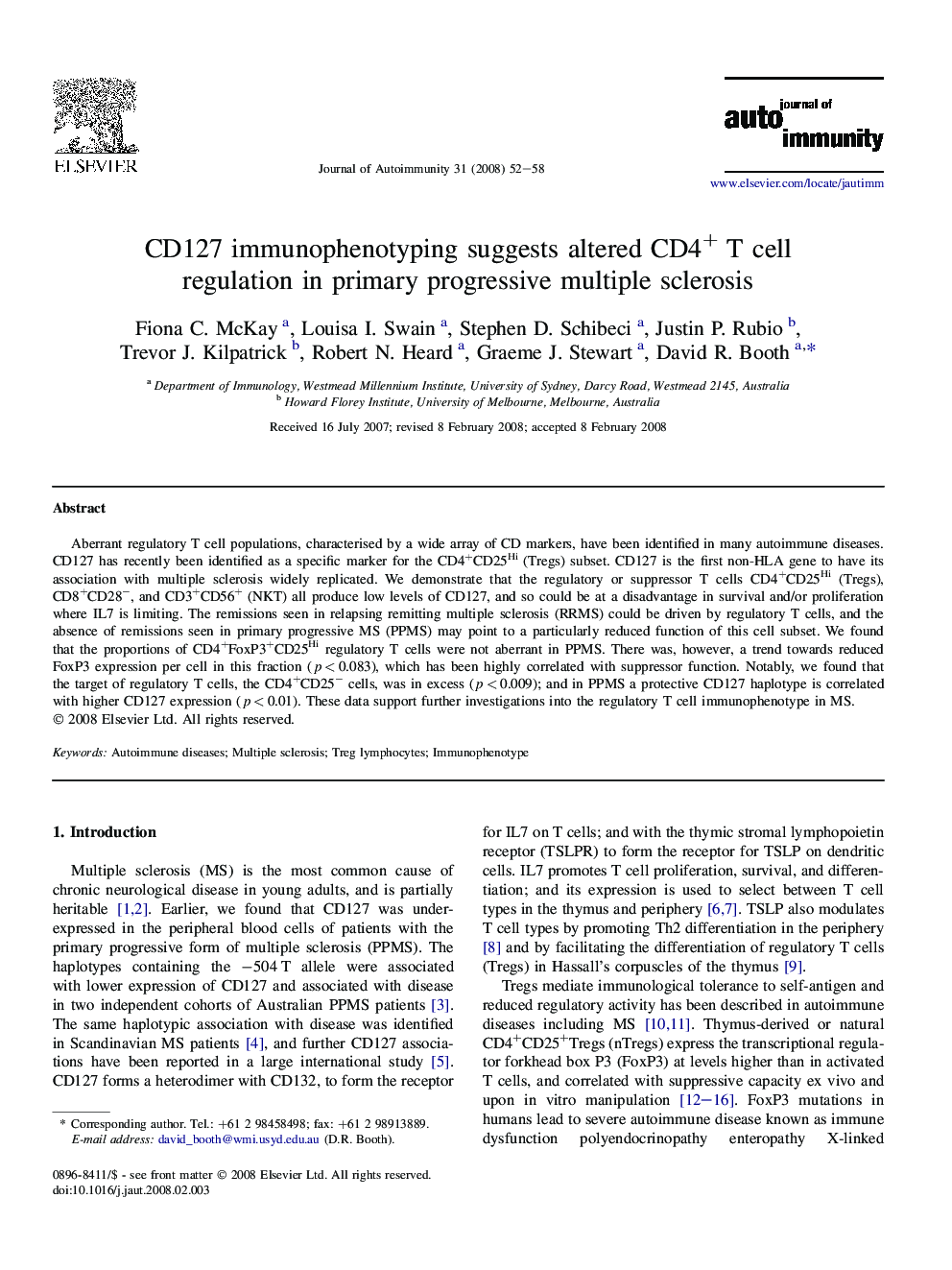| Article ID | Journal | Published Year | Pages | File Type |
|---|---|---|---|---|
| 3368227 | Journal of Autoimmunity | 2008 | 7 Pages |
Abstract
Aberrant regulatory T cell populations, characterised by a wide array of CD markers, have been identified in many autoimmune diseases. CD127 has recently been identified as a specific marker for the CD4+CD25Hi (Tregs) subset. CD127 is the first non-HLA gene to have its association with multiple sclerosis widely replicated. We demonstrate that the regulatory or suppressor T cells CD4+CD25Hi (Tregs), CD8+CD28â, and CD3+CD56+ (NKT) all produce low levels of CD127, and so could be at a disadvantage in survival and/or proliferation where IL7 is limiting. The remissions seen in relapsing remitting multiple sclerosis (RRMS) could be driven by regulatory T cells, and the absence of remissions seen in primary progressive MS (PPMS) may point to a particularly reduced function of this cell subset. We found that the proportions of CD4+FoxP3+CD25Hi regulatory T cells were not aberrant in PPMS. There was, however, a trend towards reduced FoxP3 expression per cell in this fraction (p < 0.083), which has been highly correlated with suppressor function. Notably, we found that the target of regulatory T cells, the CD4+CD25â cells, was in excess (p < 0.009); and in PPMS a protective CD127 haplotype is correlated with higher CD127 expression (p < 0.01). These data support further investigations into the regulatory T cell immunophenotype in MS.
Related Topics
Life Sciences
Immunology and Microbiology
Immunology
Authors
Fiona C. McKay, Louisa I. Swain, Stephen D. Schibeci, Justin P. Rubio, Trevor J. Kilpatrick, Robert N. Heard, Graeme J. Stewart, David R. Booth,
